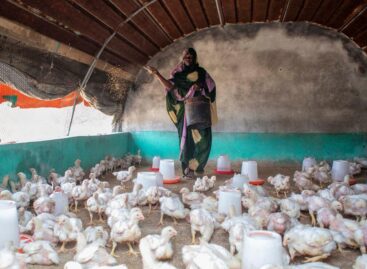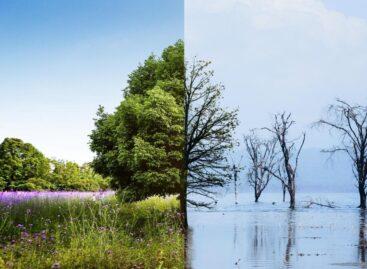FAO leads the way to clearer peatland mapping and monitoring
Peatlands cover only 3 percent of the world’s surface yet contain as much carbon as all of its vegetation, dramatically underscoring their pivotal role in global climate regulation. Their degradation, by drainage or fire or other forces, triggers their conversion from slow carbon sinks into fast sources capable of releasing carbon stored over millennia in a few decades.
To avoid their degradation and effectively plan their restoration, peatlands should be urgently mapped and monitored.
To help member states on this complex task, FAO today launched Peatland mapping and monitoring, a practical publication full of accessible technical information about the world’s peatlands and recommendations on how to manage these special ecosystems.
The publication is the joint work of 35 expert authors from 14 countries, and highlights experiences from tropical peatland countries such as Indonesia, the Democratic Republic of the Congo and Peru, and the temperate regions.
“Mapping peatlands to know their location, extent and greenhouse gas emissions potential, can help countries to plan and better manage their land, water and biodiversity, mitigating climate change and adapting to it more effectively,” says Maria Nuutinen, FAO’s lead peatlands expert with the Forestry Department and co-author of the publication.
Accurate mapping of peatlands is a prerequisite to effectively monitoring changes in peatland condition. For countries to reduce greenhouse gas emissions and fire risk, monitoring peatlands’ condition, especially their water level becomes key. The task requires a mix of satellite and ground-based exercises. To facilitate countries’ access to high-quality imagery, FAO has developed a state-of-the-art peatland restoration monitoring module.
Accessible in SEPAL, part of FAO’s geospatial toolkit, the module was successfully implemented for the first time in Indonesia by the Indonesian Peatland Restoration Agency and Ministry of Environment and Forestry. The peatland monitoring module provides timely information about soil moisture trends to help detect drainage and monitor restoration efforts. Soil moisture maps can be updated every 2 weeks using Sentinel-1 imagery from the European Space Agency.
“The open-source peatland monitoring module on the SEPAL platform will be further developed to serve the needs of the Congo Basin, helping to detect and address potential changes and avoid fires,” adds Julian Fox, National Forest Monitoring Team Leader at FAO. “Similarly, Peru is working towards developing a national peatland mapping methodology that can underpin more targeted actions to protect and manage the coastal, Andean and Amazonian peatlands. These countries and other partner organizations in the Global Peatlands Initiative will pave the way for others to take action on peatlands.”
Peatlands: a quick primer
Pristine peatlands, or ‘mires’, are characterized by nearly constant waterlogged conditions with a lack of oxygen slowing down decomposition by microorganisms. It can take 1 000 years for one meter of organic material – the peat – to accumulate, and peatland depths can be five meters in climates close to the poles, and more than 15 meters in some tropical areas, where higher plant productivity has resulted in deeper deposits.
Recognizing peatlands is not easy, so “mapping and monitoring need to be approached as a complex and nuanced exercise,” says Hans Joosten, one of the world’s foremost peat experts and publication co-author. Surface vegetation types, for example, are predominantly mosses for arctic peatlands, mostly reeds in the temperate zones, and mangroves or peat swamp forests in the tropics. Peatlands are still being discovered, including one of the world’s largest – larger than England – connected tropical peatland complex in the remote and hard-to-access Cuvette Centrale region of the Congo rainforest.
Around 15 percent of the world’s peatlands have been drained mainly for cropping, grazing, forestry and extraction uses leading to long-term degradation. Hotspots of peatland degradation are located especially in Europe, Russia and Northern America, Southeast Asia, East Africa and the Amazon basin. That is often due to lack of knowledge about peatlands location, extent, special characteristics, such as fire risk, benefits and potential for climate change mitigation.
Solid knowledge on the location and evolution of peatlands will also help their consideration in national agricultural, soil, forest and land-use policies and plans, and monitoring and reporting systems. At the field level, better information of peatland location can help land use planners, managers and farmers in their management decisions.
Key peatland countries taking leadership
Indonesia, which has 40 percent of all tropical peatlands, has been particularly active in taking corrective actions to change drainage and deforestation practices that, since the 1980s, have led to extensive fires. Among the government’s initiatives are the “One Map” policy and the creation of the Peatland Ecosystem Protection and Management Plan to guide peatland protection and monitoring. Likewise, the Democratic Republic of Congo has established a Peatland Unit to define and address priority needs. The discovery of the Cuvette Centrale peatlands is recent, but is already having a large impact on the climate and conservation policies in the region.
However, much remains to be done for preserving peatland carbon, so knowledge-sharing and capacity development offers significant synergies and can pave the way to better targeted climate action. Country experiences of peatland mapping and monitoring will play a key role in developing a stronger global knowledge base, so other countries can learn and use innovative approaches to reach the ultimate goal of protecting this precious and fragile natural resource.
Related news
FAO: International food prices have been declining since September
🎧 Hallgasd a cikket: Lejátszás Szünet Folytatás Leállítás Nyelv: Auto…
Read more >FAO-Ministry of Agriculture Scholarship Program Continues
🎧 Hallgasd a cikket: Lejátszás Szünet Folytatás Leállítás Nyelv: Auto…
Read more >FAO: 2026 is the International Year of Rangelands and Pastoralists
🎧 Hallgasd a cikket: Lejátszás Szünet Folytatás Leállítás Nyelv: Auto…
Read more >Related news
Akcenta: The Hungarian economy returned to growth in 2025, risk management will come to the fore in 2026
🎧 Hallgasd a cikket: Lejátszás Szünet Folytatás Leállítás Nyelv: Auto…
Read more >At profit temperature – 3 climate trends reshaping the economy
🎧 Hallgasd a cikket: Lejátszás Szünet Folytatás Leállítás Nyelv: Auto…
Read more >BMI: The manufacturing industry ended the year with sustained expansion
🎧 Hallgasd a cikket: Lejátszás Szünet Folytatás Leállítás Nyelv: Auto…
Read more >







